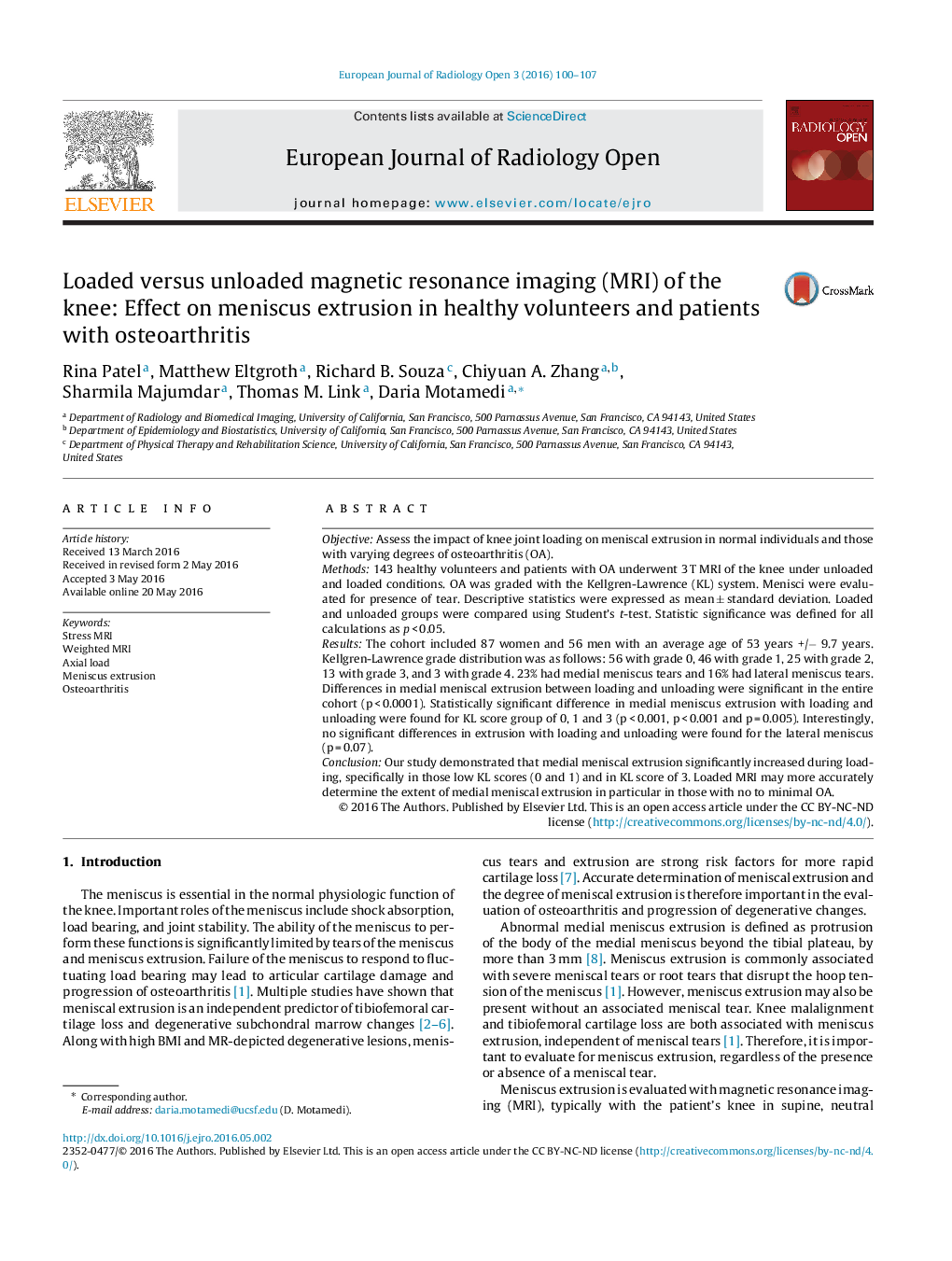| Article ID | Journal | Published Year | Pages | File Type |
|---|---|---|---|---|
| 4229660 | European Journal of Radiology Open | 2016 | 8 Pages |
•Increased extrusion of the medial meniscus with loaded MRI compared to unloaded.•No change in lateral meniscus extrusion between loaded and unloaded MRI.•Increased extrusion of the medial meniscus with loaded MRI in those with tears.
ObjectiveAssess the impact of knee joint loading on meniscal extrusion in normal individuals and those with varying degrees of osteoarthritis (OA).Methods143 healthy volunteers and patients with OA underwent 3 T MRI of the knee under unloaded and loaded conditions. OA was graded with the Kellgren-Lawrence (KL) system. Menisci were evaluated for presence of tear. Descriptive statistics were expressed as mean ± standard deviation. Loaded and unloaded groups were compared using Student’s t-test. Statistic significance was defined for all calculations as p < 0.05.ResultsThe cohort included 87 women and 56 men with an average age of 53 years +/− 9.7 years. Kellgren-Lawrence grade distribution was as follows: 56 with grade 0, 46 with grade 1, 25 with grade 2, 13 with grade 3, and 3 with grade 4. 23% had medial meniscus tears and 16% had lateral meniscus tears. Differences in medial meniscal extrusion between loading and unloading were significant in the entire cohort (p < 0.0001). Statistically significant difference in medial meniscus extrusion with loading and unloading were found for KL score group of 0, 1 and 3 (p < 0.001, p < 0.001 and p = 0.005). Interestingly, no significant differences in extrusion with loading and unloading were found for the lateral meniscus (p = 0.07).ConclusionOur study demonstrated that medial meniscal extrusion significantly increased during loading, specifically in those low KL scores (0 and 1) and in KL score of 3. Loaded MRI may more accurately determine the extent of medial meniscal extrusion in particular in those with no to minimal OA.
